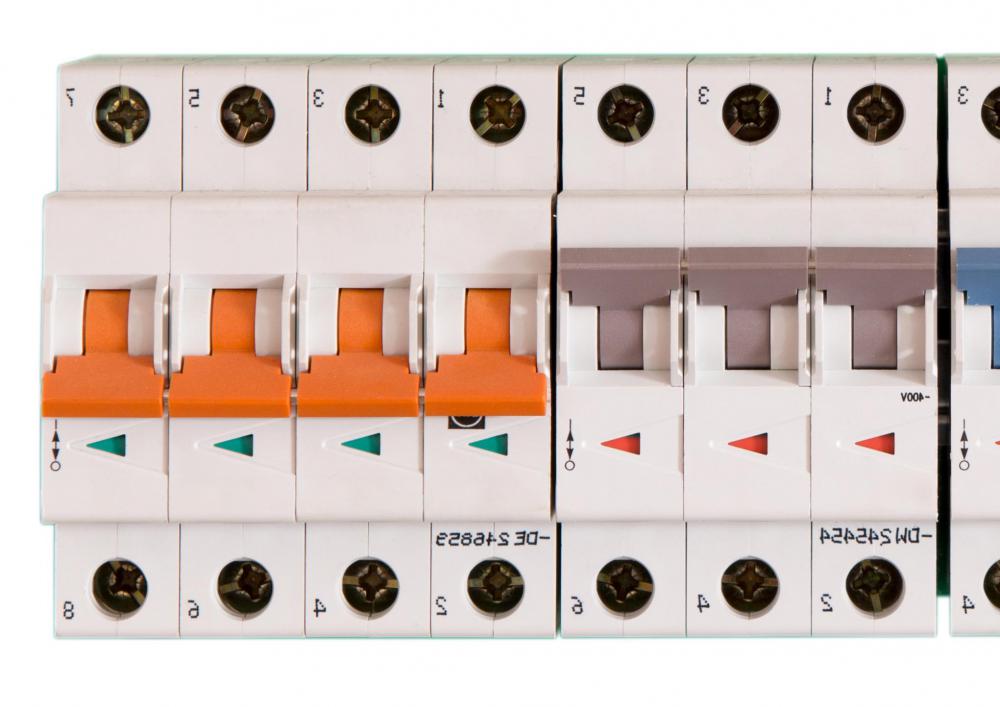At EasyTechJunkie, we're committed to delivering accurate, trustworthy information. Our expert-authored content is rigorously fact-checked and sourced from credible authorities. Discover how we uphold the highest standards in providing you with reliable knowledge.
What Are the Different Types of Electronic Supplies?
There are a myriad of electronic supplies and components available. Components can be considered passive, meaning they can operate without external power, or active, meaning they cannot operate without external power. Some of the most basic types of passive electronic supplies include inductors, resistors, and capacitors. When these basic components are combined, they produce additional types. Transistors and batteries are prime examples of active components.
Terminals and connectors are electronic supplies used to make cables and specific electrical connections. Many variations of switches exist either to break the flow of electrical current, known as an open switch, or to pass electrical current, known as a closed switch. Switches can be manually operated or triggered by a particular event, such as thermal or magnetic activity.

Resistors are used to pass current and are in nearly every electronic circuit and have a number of possible variations. For example, there are fixed-value, variable-value, and voltage-dependent resistors. Capacitors store and then release an electrical charge and have a number of uses, such as filtering power voltages.
Another large category of electronic supplies includes items like protection devices and power devices. Fuses, circuit breakers, and lightning arresters are common types of these components designed to protect circuits from excessive voltages and currents. Electronics that provide electrical power include acid or alkali batteries, fuel cells, and power supplies.

Inductors, electronic supplies that use magnetism, can be found in components such as transformers, solenoids, and microphones. Additional active components that can be used for amplification in applications are known as transistors. Loudspeakers and buzzers are a type of electronic known as a transducer, generating a physical effect driven by an electrical signal. Sensors and detectors are variations on the transducer that generate an effect only under specified conditions, typically environmental, such as motion or position.

Semiconductors and integrated circuits make up another vast category of electronic supplies. Diodes are a type of semiconductor designed to conduct electricity in one direction and that come in many styles. Light emitting diodes (LED) are the most well-known variety. Integrated circuits can be either digital or analog.
The list of variations and configurations of integrated circuits is long and includes many well-known computer components. Memory in all of its forms falls into this category. Also included are other types of electronic supplies, such as display drivers, microprocessors, and micro-controllers. Optoelectronic components, consisting of items like LED displays and photo-couplers, form another category. Many more types of electronic supplies are available, covering virtually every possible application.
AS FEATURED ON:
AS FEATURED ON:














Discussion Comments
@hamje32 - I like LEDs too. I think that they represent what I believe is the greatest thing that has ever happened with electronic components - miniaturization.
I remember the old days, when we had large, over sized radios and amplifiers that used vacuum tubes. These things were state of the art at the time, but in hindsight, they are antiques.
Now you can put a hundred times that technology on the head of a pin, thanks to the integrated circuit chip and the transistor. By all accounts, it appears that technology keeps getting smaller and smaller too – and more powerful. I see no limit to Moore’s law.
@everetra - I don’t build circuits myself, but I love LEDs. These are awesome. They are much more durable than standard light bulbs and you find LED technology in a lot of devices nowadays, from flat panel television sets to standalone units.
The LED flat panels TVs are still a bit prohibitive in price, so I will have to wait a little while longer for the price to come down.
But the picture quality is amazing. I think they are worth the wait – for me, anyway.
@SkyWhisperer - Those are miniature electronic components and they are commonly used in everyday household devices.
However, I work in the utility industry. There we are used to dealing with the big, work horses of electronic components. These would include first and foremost relay protection devices.
These are units that are the size of older, larger computers, with various ports for hooking them up to the relay test sets. You also have transformers and circuit breakers and stuff like that.
We don’t deal too much with those components. One thing I should point out is that these bigger components operate on higher voltages.
Quite frankly, they could injure or even kill you if not handled properly. Relay technicians have to undergo rigorous training before they go out on the field and start using this stuff.
You can buy electronic components cheaply nowadays and build your own electronic circuits.
In the early days of playing with electronics I bought a whole bunch of transistors, capacitors, resistors, integrated circuits and batteries.
With these basic components and a few bread boards I was able to build a wide variety of electric circuits. This included everything from timers to amplifiers and everything else that you can imagine.
You don’t need to be a genius to know how to assemble the components either. You can get books that contain schematic diagrams which will show you how to build the various circuits. The components can be wired together (which would be easier for beginners) or if you are more adventurous, you can use etched printed circuit board.
Of course, etched circuits will be permanent because they are etched onto boards.
Post your comments